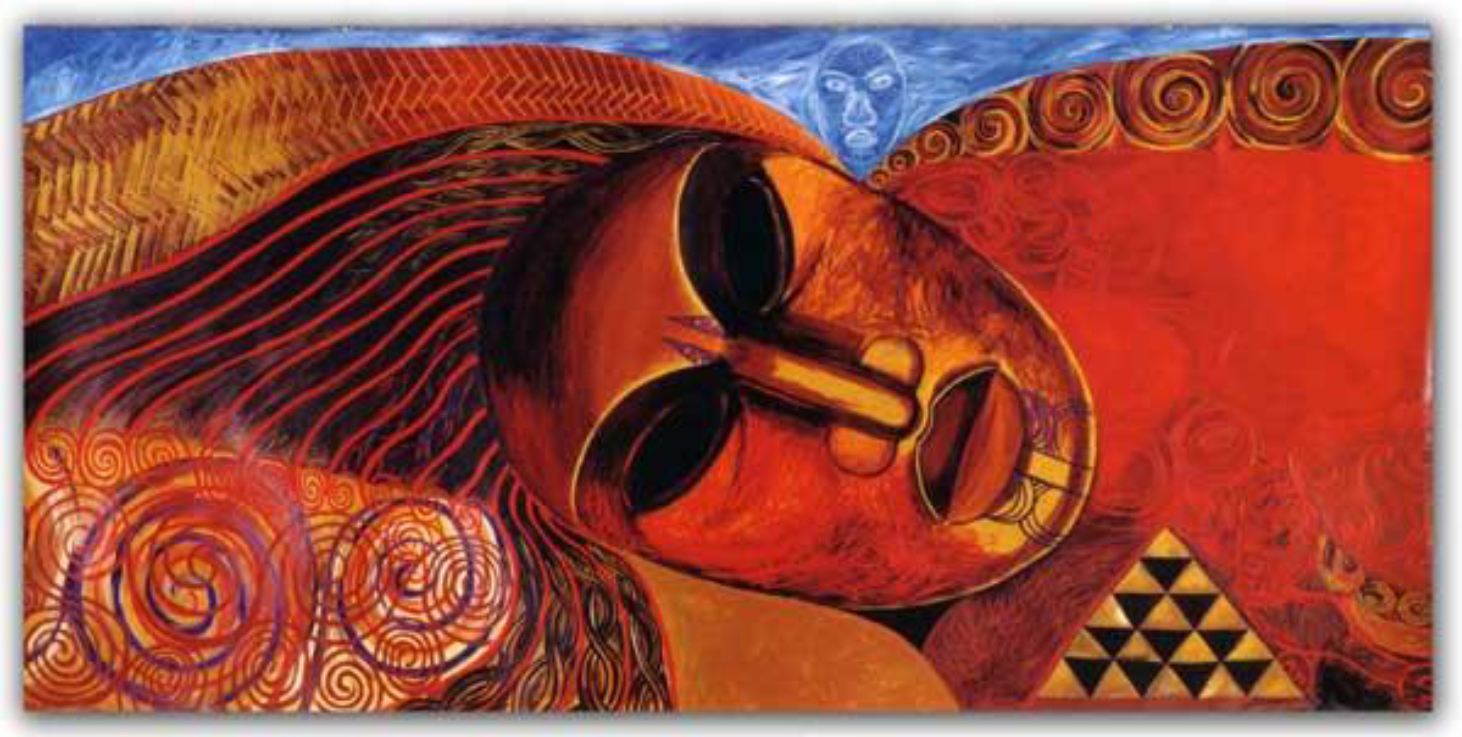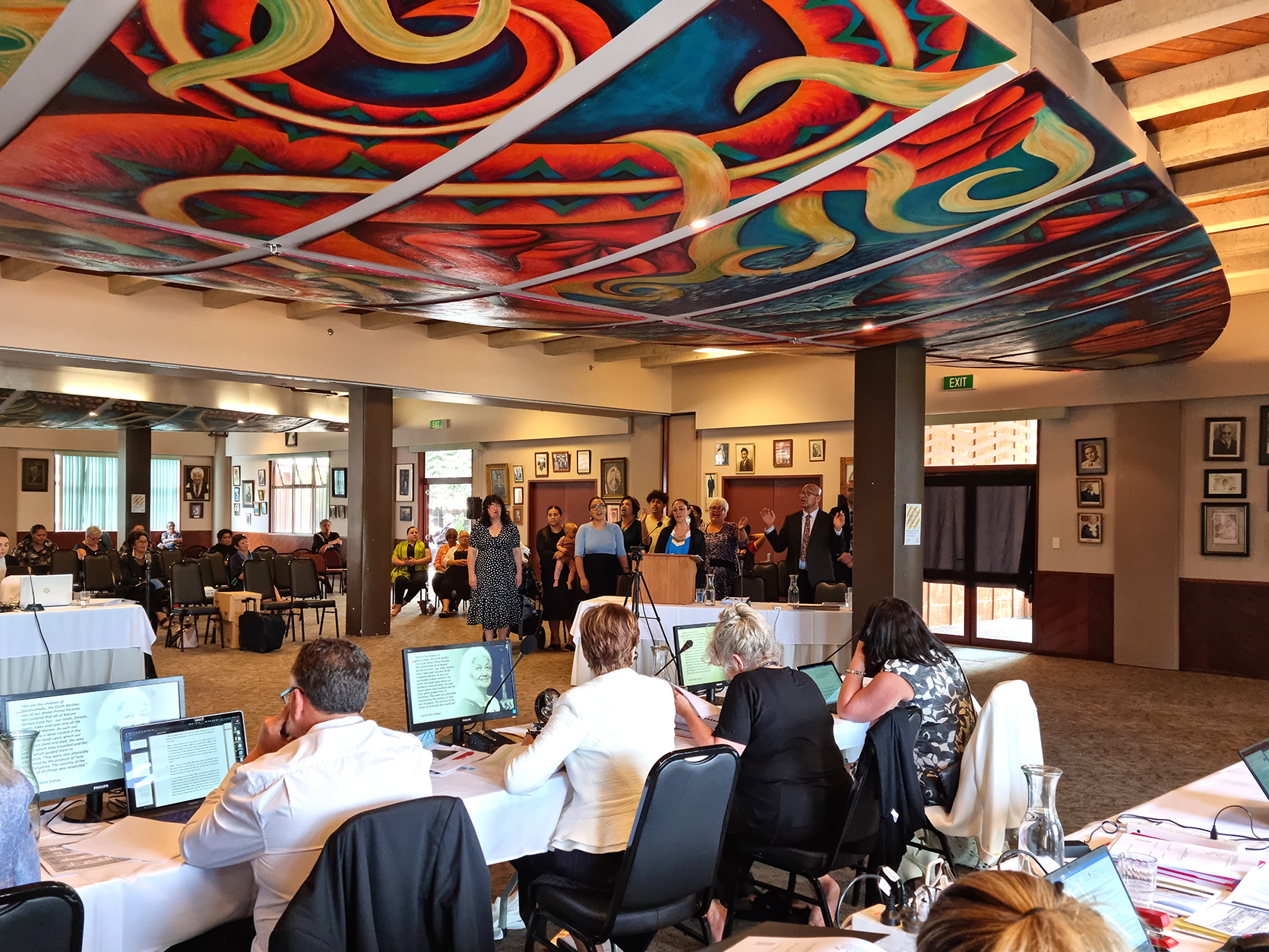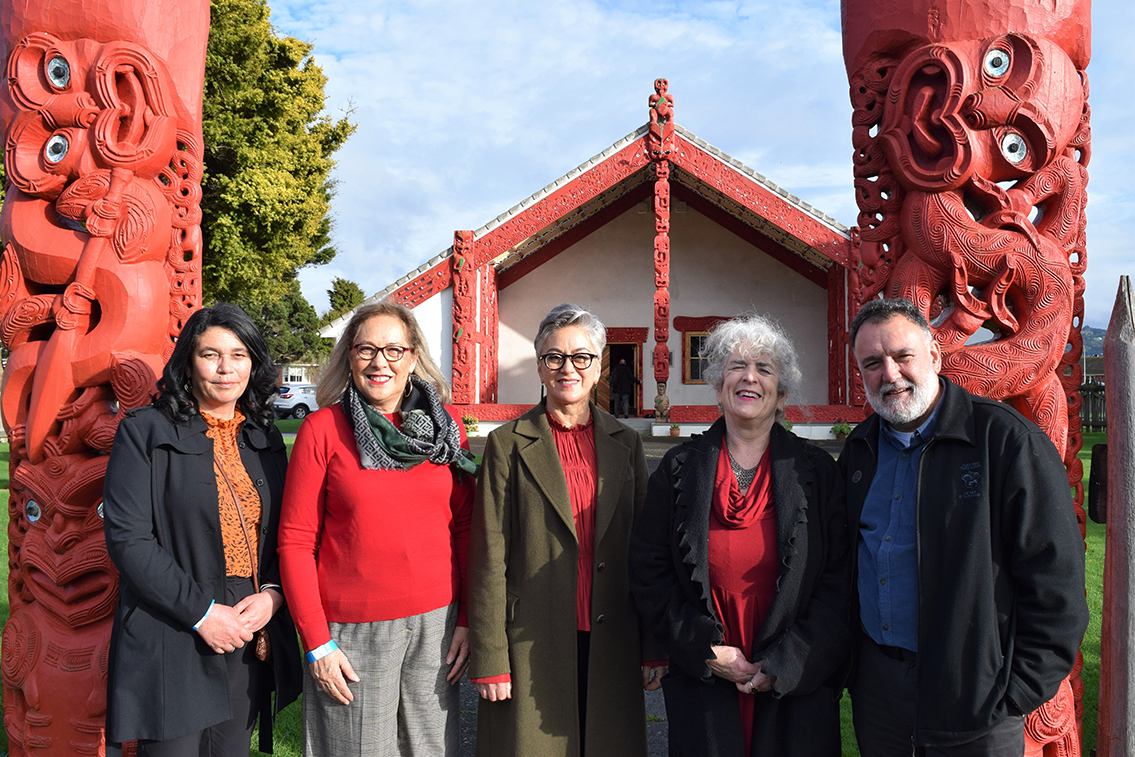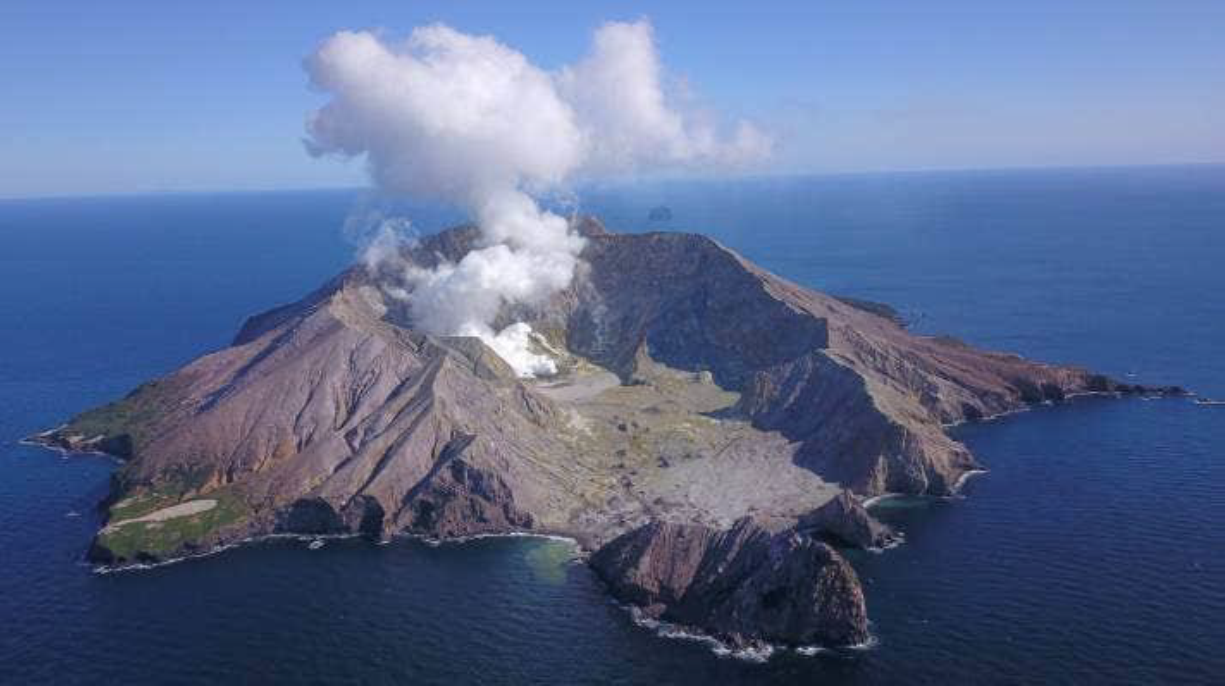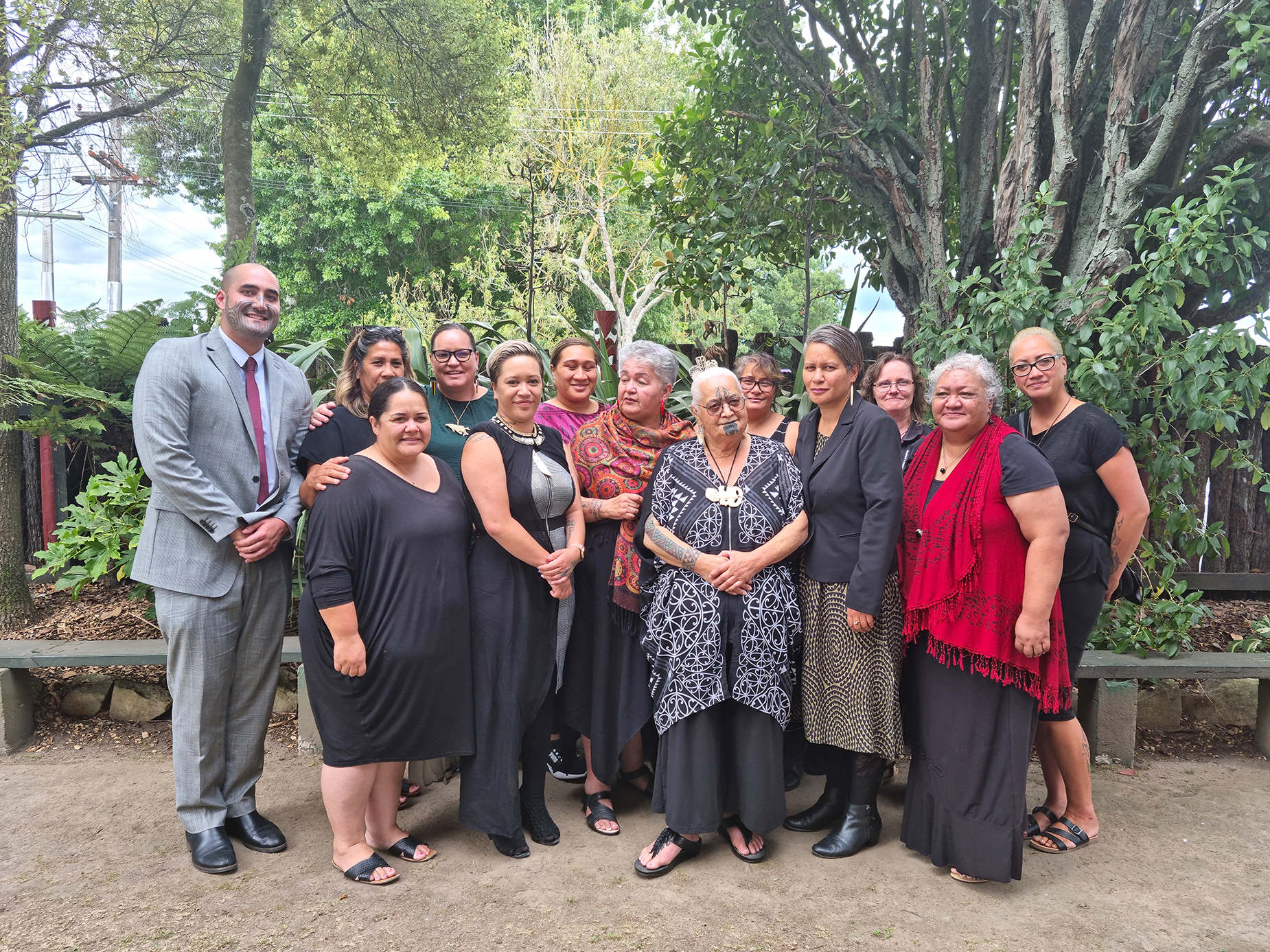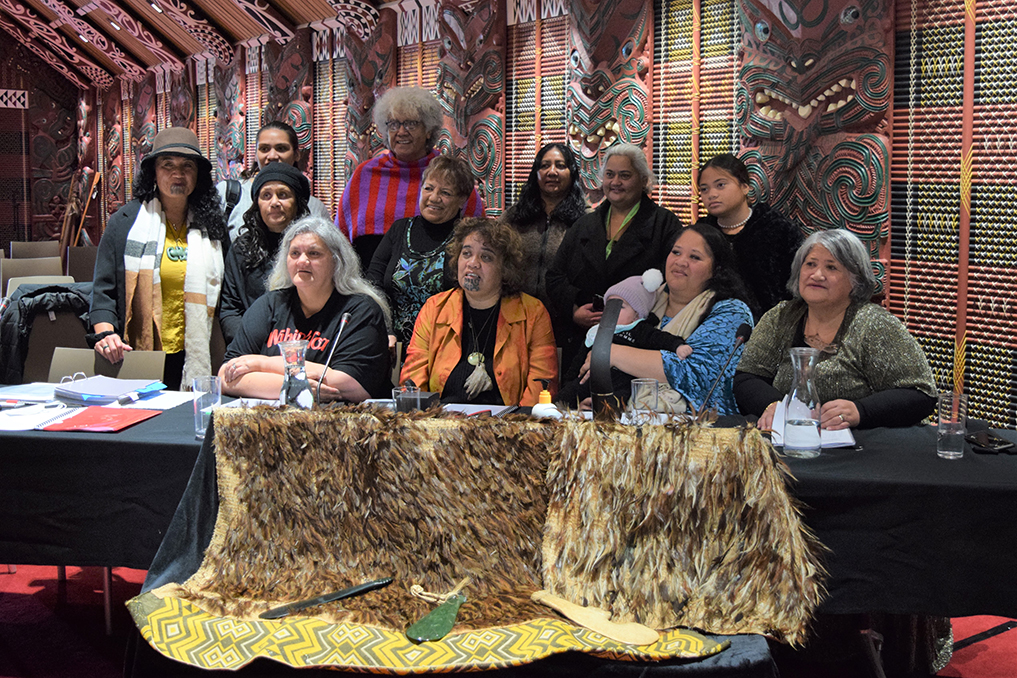Te Kete Pūputu: The Online Guide to the Mana Wāhine Tūāpapa Evidence
Nau mai haere mai kuhu mai ki Te Kete Pūputu: The Online Guide to the Mana Wāhine Tūāpapa Evidence.
Whaowhia te kete mātauranga
Fill your basket of knowledge.
In its tūāpapa phase (comprising contextual hearings), the Mana Wāhine Kaupapa Inquiry has gathered a rich body of evidence from wāhine around the motu. In line with this whakataukī, the Mana Wāhine Kaupapa Inquiry panel want this kōrero to be available as widely as possible. This website is a step towards this.
Explanation of the name ‘Kete Pūputu’
Ka kitea te takenga mai o te ingoa ‘Kete Pūputu’ i te akiaki nei a Bruce Biggs kia ‘whaowhia te kete mātauranga’. Tērā anō he kōrero tawhito i kitea ki te waiata tangi a Tūroa mō Te Kōtuku. Ka takoto te kōrero ‘Whaowhia te kete putuputu o Raukatauri’. Arā he whai rautaki te kete, he whai mana te kete, koia i kata ai a Kae.
Na, ka rua ngā aronga matua ki te ingoa. Tuatahi he kete kōrero tēnei hei pupuru i ngā tuhinga, i ngā puakanga a ngā kaikōrero, i ngā kohinga a ngā kairangahau, i ngā putunga rau whārangi e iri ai ki te paetukutuku. Tuarua he putuputu te raranga i a te kete nei, kāore i te pūareare, he piripiri ngā rau, kāore i te koroputaputa. He pakari, he kaha te hanga putuputu, he hiahia nō mātou. He kete pupuru taonga te kete, he pupuru pūkenga, he pupuru wheako, he pupuru i te manawa nui o wahine.
He iho tō Te Kete Pūputu ki te kupu 'putu', arā, ko te heipū atu, ko te pūkei mai ki tētehi wāhi. Kāti, ka whakairihia ake ki te ingoa Kete Pūputu te aronga ki a Raukatatauri me te whirikoka o Hine-te-iwaiwa mā, e mana ai ngā tū kōrero, ngā tū tauākī ki te tūāpapa o Mana Wāhine.
The name ‘Kete Pūputu’ is drawn from statements such as those made by Bruce Biggs urging people to ‘whaowhia te kete mātauranga’, fill your knowledge basket. There are statements still older again associated with mana wahine. For instance, a similar statement appears in the tangi composed by Tūroa for the death of Te Kōtuku (Ngā Moteatea 153). That statement, ‘Whaowhia te kete putuputu o Raukatauri’, can be interpreted to mean the robust body of strategy and expertise that ultimately exposed the laughter of Kae.
The two main themes found in this name are first, the concept that this is a kete, to contain the documents, statements made by speakers, outcomes of research, and numerous pages otherwise stacked high and now accessible online. The second concept is in the word 'pūputu' or ‘putuputu’, the very tightly woven structure of this form of kete, absent of gaps, the well aligned harakeke strips that leave no holes. Putuputu infers a solid framework as is our intent. Kete putuputu are special woven receptacles for holding taonga, here it contains evidence of the abilities, experiences, and resilience of wahine. The essence of the name ‘Kete Pūputu’ also places emphasis on the word 'putu' meaning to place together or to store.
Finally, there is the connection to Raukatauri and the inherent strength present in the assembly of Hine-te-iwaiwa to convey status to the evidence, and statements that are the tūāpapa of Mana Wāhine. The assembly of Hine-te-iwaiwa was a group of women each having different skills, including Raukatauri, Raukatamea, Itiiti, Rekareka, Rau-hau-a-Tangaroa, and others. Hine-te-iwaiwa's assembly is the gathering of attributes and knowledge of women, like our tūāpapa hearing phase.
Nā Dr Ruakere Hond
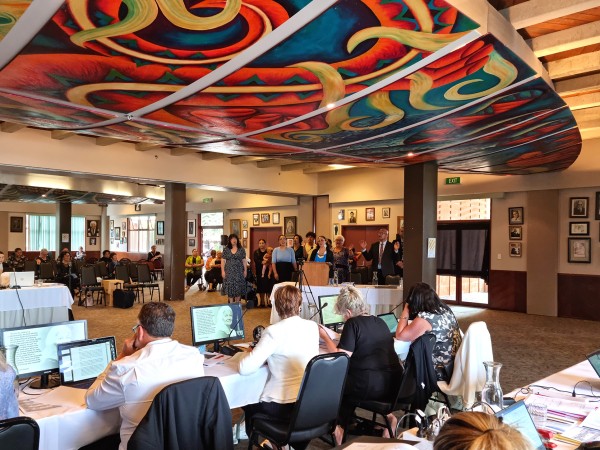
Interior of Tūrangawaewae Marae, Ngāruawāhia
The structure of this website
Read what witnesses said about the following four themes – the same themes of the guide witnesses used to prepare their evidence, called Te Arataki (Wai 2700, #3.1.312(b))(external link):
The tūāpapa hearings
Between February 2021 and September 2022, over 126 witnesses participated in six ‘tūāpapa hearings’ of the Mana Wāhine Kaupapa Inquiry, giving evidence before the Tribunal panel comprising Judge Sarah Reeves(external link), Professor Linda Tuhiwai Smith, Kim Ngarimu, Dr Ruakere Hond, and Dr Robyn Anderson.
Witnesses’ evidence spanned tikanga as it relates to wāhine Māori and the Māori understanding of wāhine in te ao Māori, setting the tūāpapa (foundation) for the inquiry. Their kōrero was diverse, covering pūrākau (traditional stories) and unique iwi and hapū traditions, kōrero tuku iho (oral tradition), witnesses’ own personal views and life experiences, waiata, karakia, poetry, and academic research.
- Read more about the tūāpapa hearings, including their locations and witnesses.
- See the hearing participants, organised by hearing.
- See the hearing participants, organised by claim.
- See all briefs of evidence.
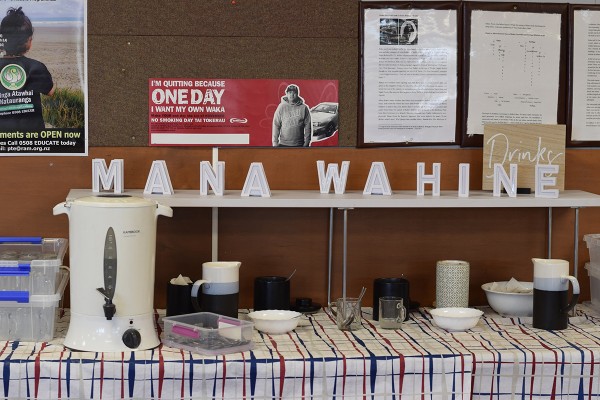
Wharekai at Terenga Parāoa Marae, Whangārei
The approach of this website
This website is contextual and informative and does not present a definitive view of the evidence heard. In the words of one witness, Professor Leonie Pihama (doc A19, p 6)(external link):
‘In speaking to traditional knowledge(s) it is critical that we do not fall into the colonial, reductionist trap of assuming that there is one, singular truth or version in regards to how we understand our ways of being.’
Accordingly, this website gathers and collates the mātauranga that witnesses shared with the Tribunal but does not make findings as we would in a report. Instead, users can explore the kōrero for themselves, including key themes, key quotes, whakataukī, and images, and the evidence itself.
Please note, not every witness spoke about every theme. Quotes from witnesses have been lightly edited for typographical errors and consistency, but variations in expressions of names (ie, Hinenuitepō or Hine-nui-te-po) have not been standardised to preserve the integrity of the kōrero.
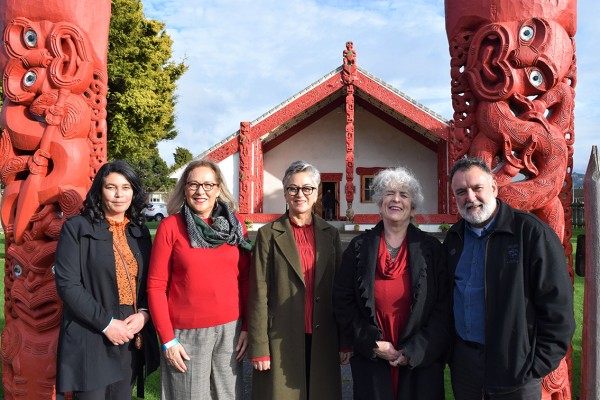
Mana Wāhine inquiry panel outside Waiwhetū Marae, Lower Hutt, August 2022. From left: Kim Ngarimu, Professor Linda Tuhiwai Smith, Judge Sarah Reeves, Dr Robyn Anderson, and Dr Ruakere Hond.
